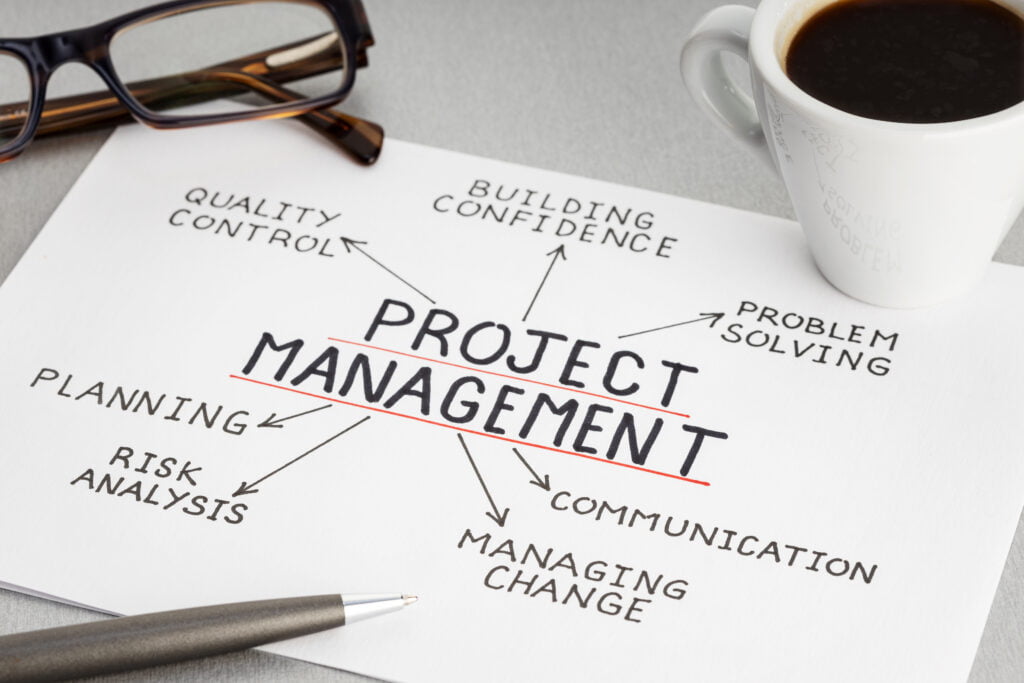So you’re ready to take your project management skills to the next level and explore the world of project management tools. But where do you even start? In this article, we’ll guide you through the basics of using a project management tool. From creating tasks and assigning them to team members, to tracking progress and collaborating effectively, we’ll cover it all. Whether you’re a seasoned project manager or new to the game, by the end of this article, you’ll be equipped with the knowledge to confidently navigate any project management tool that comes your way. So let’s get started!
1. Choosing the Right Project Management Tool
When it comes to project management, having the right tool can make all the difference. With so many options available, it’s important to consider your needs and requirements before making a decision.
1.1 Consider Your Needs and Requirements
Before diving into the world of project management tools, take a moment to define your needs and requirements. Consider factors such as the size and complexity of your projects, the number of team members involved, and the specific features and functionality you require. This will help you narrow down your options and find a tool that aligns with your goals.
1.2 Research Available Options
Once you have a clear understanding of your needs, it’s time to research the available options. Take advantage of online resources, such as blog posts and comparison websites, to get an overview of different project management tools. Consider factors such as pricing, ease of use, and customer reviews to create a shortlist of tools that seem promising.
1.3 Read Reviews and Compare Features
Reading reviews from real users can provide valuable insights into the strengths and weaknesses of different project management tools. Look for reviews that highlight features relevant to your needs and pay attention to any recurring themes or issues. Additionally, make sure to compare the features and functionality of each tool to ensure they align with your requirements.
2. Setting Up the Project Management Tool
Once you’ve chosen a project management tool, it’s time to set it up and customize it to meet your specific needs.
2.1 Create an Account
The first step in setting up a project management tool is creating an account. This typically involves providing your email address and creating a password. Some tools may also require additional information, such as your organization’s name or your role within the team. Follow the prompts provided by the tool to complete the account creation process.
2.2 Customize Settings and Preferences
After creating an account, take some time to customize the settings and preferences of your project management tool. This might include selecting a theme or color scheme, setting notification preferences, and configuring user permissions. By tailoring the tool to your specific needs, you can ensure that it provides the most relevant and efficient experience for you and your team.
2.3 Add Team Members and Roles
A key aspect of project management is collaboration, so it’s important to add team members and define their roles within the tool. Most project management tools allow you to invite team members via email, and you can typically assign different levels of access and permissions to each individual. Ensuring that everyone has the right level of access will help maintain a smooth workflow and prevent any potential disruptions.

3. Creating a Project
With the tool set up and your team members added, it’s time to create your first project.
3.1 Define Project Goals and Objectives
Before diving into the tasks and deadlines, it’s important to define the goals and objectives of your project. What are you trying to achieve? What outcomes are you aiming for? Clearly defining these goals will provide a clear direction for your project and help guide future decision-making.
3.2 Break Down Tasks and Subtasks
Once you have a clear understanding of your project goals, it’s time to break down the project into individual tasks and subtasks. Start with the major deliverables or milestones and then identify the smaller tasks that need to be completed to achieve each milestone. This will help you create a comprehensive list of the work that needs to be done.
3.3 Set Deadlines and Milestones
With your tasks identified, it’s important to set deadlines and milestones for each one. This will help keep your team on track and provide a sense of progress as the project moves forward. Consider the dependencies between tasks and take into account any external factors that may impact the project timeline. By setting realistic deadlines and milestones, you can ensure that your project stays on schedule.
4. Assigning Tasks and Responsibilities
Now that you have a clear project plan in place, it’s time to assign tasks and responsibilities to your team members.
4.1 Create Task Assignments
Within your project management tool, create task assignments for each team member. Clearly define what needs to be done, who is responsible for completing the task, and any additional details or instructions. This will provide clarity and accountability within the team and help ensure that everyone knows their role in the project.
4.2 Set Priorities and Dependencies
As you assign tasks to your team members, consider the priorities and dependencies between them. Are there certain tasks that need to be completed before others can begin? Are there any tasks that require specific skills or expertise? By setting priorities and dependencies, you can ensure a smooth workflow and avoid any bottlenecks or delays.
4.3 Allocate Resources
In addition to assigning tasks and responsibilities, it’s important to allocate resources to each task. This includes things like time, budget, and any necessary tools or materials. By clearly defining the resources required for each task, you can help your team members plan and allocate their time effectively.

5. Tracking Progress and Managing Workflows
With tasks assigned and resources allocated, it’s important to track progress and manage workflows to keep the project on track.
5.1 Monitor Task Status
Regularly monitor the status of tasks within your project management tool. This will give you an up-to-date view of how the project is progressing and allow you to identify any tasks that may be at risk of falling behind schedule. Most project management tools provide visual indicators, such as color-coding or progress bars, to help you easily track task status.
5.2 Update Progress and Communicate
Encourage your team members to regularly update their progress within the project management tool. This might involve updating task statuses, adding comments or notes, or attaching relevant documents or files. Clear and regular communication within the tool will help keep everyone informed and ensure that any potential issues or roadblocks are addressed in a timely manner.
5.3 Use Dashboards and Reports
Take advantage of the dashboard and reporting features provided by your project management tool. Dashboards can provide a snapshot of the overall project status, while reports can offer more detailed insights into things like task completion rates, resource allocation, and budget tracking. These features can help you identify trends, make informed decisions, and keep stakeholders informed throughout the project lifecycle.
6. Collaborating and Communicating
Effective collaboration and communication are essential components of successful project management.
6.1 Use Team Collaboration Features
Within your project management tool, make use of the collaboration features available. These may include features such as commenting on tasks, mentioning team members in discussions, or creating dedicated chat channels for specific topics or teams. By leveraging these features, you can foster better collaboration, streamline communication, and ensure that everyone is on the same page.
6.2 Share Important Documents and Files
In most projects, there will be a need to share important documents and files among team members. Your project management tool should provide a secure and convenient way to store and share these files. Whether it’s project plans, meeting minutes, or design files, make sure that your team has easy access to the documents they need to effectively complete their tasks.
6.3 Communicate Effectively
Communication is key in any project, and it’s important to communicate effectively within your project management tool. Make sure that communications are clear, concise, and inclusive. Encourage open and honest communication among team members and be proactive in addressing any concerns or conflicts that may arise. By fostering a culture of effective communication, you can help ensure that the project runs smoothly and that everyone is working towards the same goals.
7. Managing Project Documents and Files
Effective management of project documents and files is vital to the success of any project.
7.1 Organize Files and Documents
Within your project management tool, take the time to organize your files and documents in a logical and intuitive way. Create folders or categories based on the different aspects of the project, such as design documents, meeting minutes, or project plans. By keeping your files organized, you can easily locate what you need and ensure that everyone has access to the most up-to-date versions.
7.2 Version Control and Document Management
Version control is crucial when it comes to project documents and files. Your project management tool should provide a way to manage versions and track changes over time. This ensures that everyone is working with the most recent version of a document and allows you to revert back to previous versions if needed. Make sure that your team understands the importance of version control and follows the designated processes.
7.3 Enable Document Sharing and Collaboration
In addition to organizing and versioning your project documents, it’s important to enable easy sharing and collaboration. Your project management tool should provide a way for team members to collaborate on documents in real-time, whether it’s through cloud storage integration or built-in editing features. This allows for seamless collaboration and ensures that everyone is working on the same page.
8. Integrations and Automation
Integrations and automation can help streamline your project management processes and improve overall efficiency.
8.1 Integrate with Other Tools and Software
Most project management tools offer integrations with other commonly used tools and software. Take advantage of these integrations to streamline your workflows and avoid duplication of effort. Whether it’s integrating with a communication tool, a file storage solution, or a time tracking software, these integrations can help centralize your project management processes and make them more efficient.
8.2 Automate Tasks and Workflows
Look for automation features within your project management tool that can help streamline repetitive tasks and workflows. For example, you may be able to set up automatic notifications for task deadlines or create workflows that automatically assign tasks based on predefined rules. By automating certain aspects of your project management processes, you can free up time and resources to focus on more strategic activities.
8.3 Sync Data and Streamline Processes
Consider how data sync between different tools and systems can streamline your project management processes. For example, syncing your project management tool with your calendar or task management tool can help ensure that deadlines and milestones are consistently updated and visible across all platforms. This can reduce the risk of missed deadlines and improve overall coordination within the team.
9. Managing Changes and Risks
Change is inevitable in any project, and effective change management can help mitigate risks and keep the project on track.
9.1 Track and Assess Risks
Regularly assess the potential risks associated with your project. This might involve identifying potential obstacles, evaluating the potential impact and likelihood of each risk, and developing mitigation strategies. Your project management tool should provide a way to track and manage these risks, allowing you to proactively address them and minimize their impact on the project.
9.2 Implement Change Management Processes
When changes occur within a project, it’s important to have a structured change management process in place. This process should involve assessing the impact of the change, evaluating the necessity and feasibility of the change, and obtaining appropriate approval before implementing the change. By having a clear change management process, you can ensure that changes are effectively communicated and that potential risks are managed.
9.3 Review and Adjust Project Plans
Regularly review and assess your project plans to ensure that they remain aligned with the project’s goals and objectives. This might involve reviewing the project timeline, evaluating resource allocation, and assessing the overall progress of the project. If necessary, make adjustments to your plans to accommodate changes or mitigate risks. By regularly reviewing and adjusting your project plans, you can adapt to the evolving needs of the project and ensure its successful completion.
10. Closing and Evaluating the Project
As your project nears completion, it’s important to wrap up any remaining tasks and conduct a thorough evaluation.
10.1 Complete Remaining Tasks
Take the necessary steps to ensure that all remaining tasks are completed before closing the project. This might involve finalizing documentation, conducting final testing or quality checks, or obtaining client approval. By completing all remaining tasks, you can ensure that the project is wrapped up in a timely manner and that nothing falls through the cracks.
10.2 Evaluate Project Performance
Once the project is complete, take the time to evaluate its overall performance. This might involve analyzing key metrics, reviewing stakeholder feedback, and assessing the project’s success in achieving its goals and objectives. By evaluating project performance, you can identify areas for improvement and apply lessons learned to future projects.
10.3 Document Lessons Learned
Finally, document the key lessons learned from the project. This might include identifying what went well, what could have been done differently, and any insights gained throughout the project. By documenting lessons learned, you can ensure that these valuable insights are captured and applied to future projects, improving your project management practices over time.
In conclusion, using a project management tool can greatly enhance your ability to plan, execute, and manage projects effectively. By considering your needs and requirements, setting up the tool properly, and following the outlined steps, you’ll be well on your way to successful project management. Remember to regularly communicate, collaborate, and adapt to changes, and don’t forget to leverage the features and capabilities of your chosen tool to streamline processes and improve overall efficiency. With the right project management tool and a comprehensive approach, you can achieve your project goals with ease.



